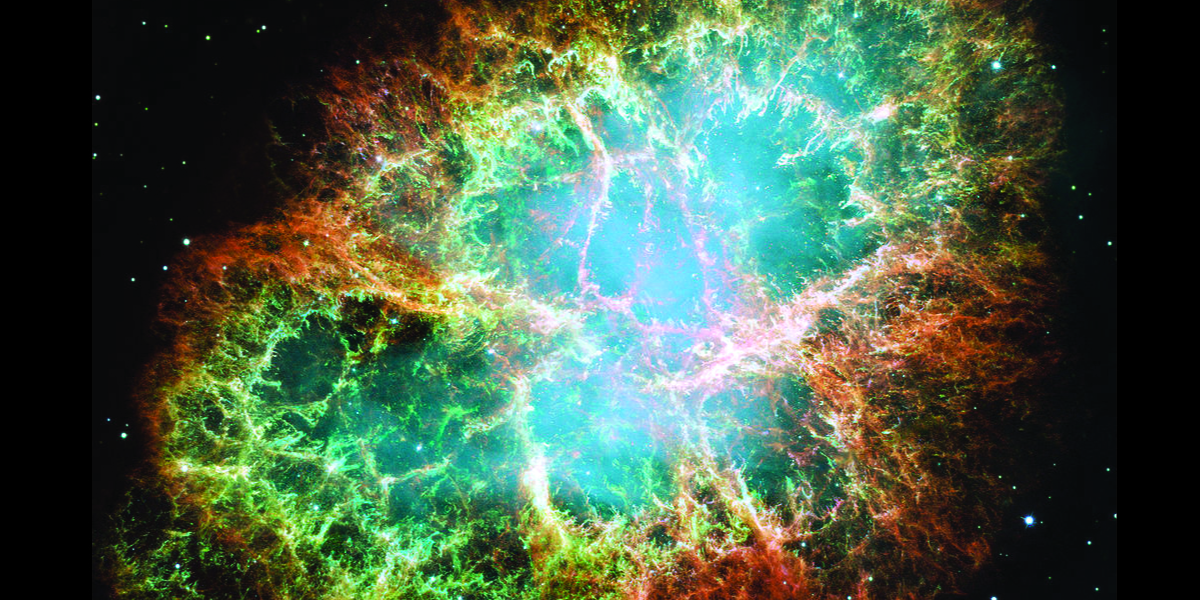31 Introduction
Chapter Outline
6.1 Electromagnetic Energy
6.2 The Bohr Model
6.3 Development of Quantum Theory
6.4 Electronic Structure of Atoms (Electron Configurations)
6.5 Periodic Variations in Element Properties

In 1054, Chinese astronomers recorded the appearance of a “guest star” in the sky, visible even during the day, which then disappeared slowly over the next two years. The sudden appearance was due to a supernova explosion, which was much brighter than the original star. Even though this supernova was observed almost a millennium ago, the remaining Crab Nebula ((Figure31.1)) continues to release energy today. It emits not only visible light but also infrared light, X-rays, and other forms of electromagnetic radiation. The nebula emits both continuous spectra (the blue-white glow) and atomic emission spectra (the colored filaments). In this chapter, we will discuss light and other forms of electromagnetic radiation and how they are related to the electronic structure of atoms. We will also see how this radiation can be used to identify elements, even from thousands of light years away.
Idea Explorations
This resource adds depth to the topic by offering perspectives or examples not covered in the core materials.
Instructions:
- Access the link by selecting the URL below. If you encounter any accessibility issues, please let your instructor or support team know so alternative formats can be provided.
- Read or explore the content at your own pace. You are not required to memorize details but reflect on how the main idea connects to the chapter themes.
Link: Research Spotlight – Planetary Exploration with Dr. Ed Cloutis (University of Winnipeg)

